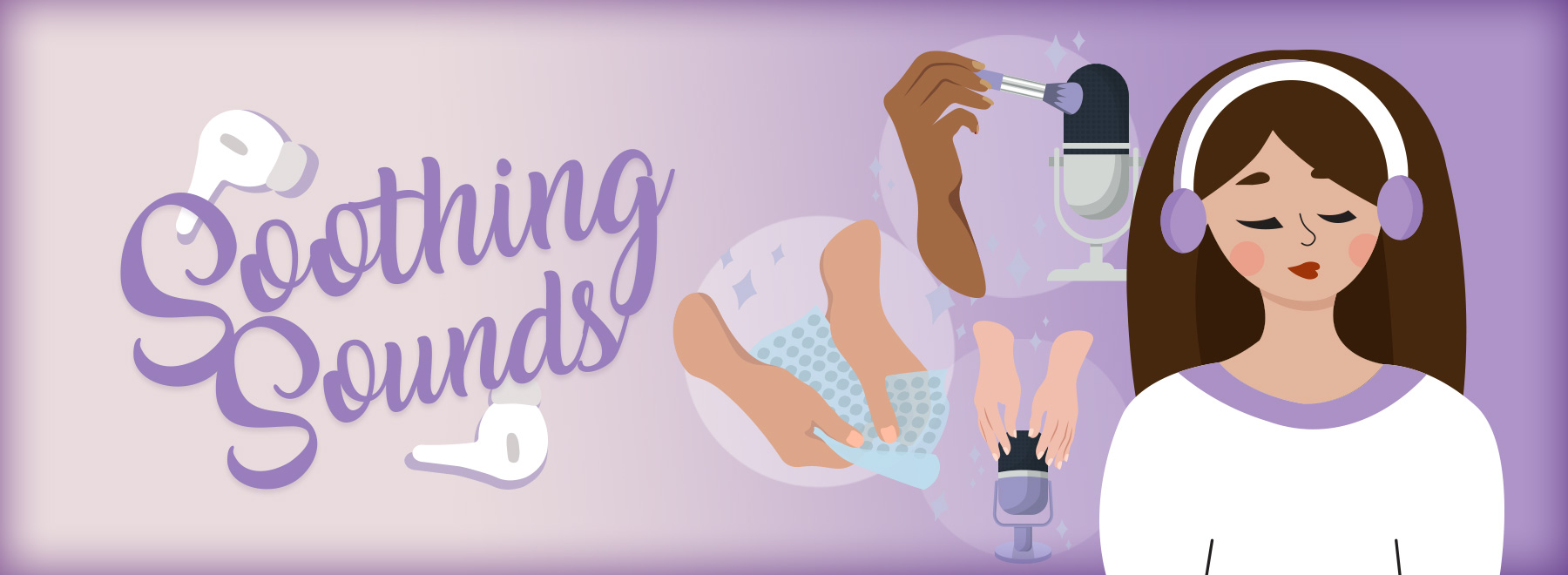ASMR noise makes for easy start to stress relief
The best places to go to keep life’s stressors from morphing into major mental health crises could be the same soothing locales that welcomed more than 90 billion visits in 2022.
In the world of ASMR videos online, a listener can be in the comfort of a living room recliner and still be soothed by beach waves at sunset, trace artsy shapes with an attentive artist or perhaps vent a little with their hairdresser during a virtual haircut in order to relax quicker, get to sleep faster or simply achieve a feeling of inner balance.
The term means autonomous sensory meridian response and covers a broad range of definitions related to auditory and tactile sensory stimulation. The tingly sensations often sought by its followers aren’t caused by a direct physical source; rather, it’s heard and then it’s felt, usually near the scalp and moving down to the extremities as the listener becomes more relaxed. It’s a sensation that’s often experienced for the first time in childhood, for example when hearing a parent or loved one read a favorite story.
With its emergence from obscurity to a full-on area of scientific study, mental health professionals say more patients are finding the uber-popular category of videos to be a huge benefit to their mental health strategies.

“I definitely have patients who use ASMR and find it helpful,” said Dr. Hannah Ford, associate professor of psychology at UMMC and director of the Psychology Residency Program. “Of those who have shared with me that they like ASMR, there has definitely been variability in terms of what they listened to.”
The genre of videos has been called YouTube’s “quietest trend” and employs an array of vocal techniques, typically whispering or soft-spoken low tones and audio creations. Sounds such as the folding crinkle of tissue paper or the soft taps of fingernails on a coffee mug are amplified by the content creator, making the use of ear buds to enjoy them to maximum effect a near-necessity. A nearly limitless menu of subgenres exists, from opening gifts (or “unboxing,” as the category has been informally named) and making handcrafts to sketching tattoo designs to eating or chewing food.
“Whatever is relaxing to the individual person has the potential to be beneficial,” Ford said.
A report in April by YouTube’s Official Trends Podcast traced the genre back to 2007, when some of the first videos featuring elements of ASMR appeared. Analysts with the world’s foremost video sharing and social media platform said it’s tough to pinpoint the first ASMR video, but by 2017 some of its most popular content creators had signed up their 1 millionth subscriber. And between 2019 and the worst of the COVID-19 pandemic in 2020, views in the genre grew by more than 40 percent and surpassed 1 billion per month.
It’s a given many of those views have come from everyday people trying to deal with new economic or health-related realities post-pandemic. For those using professional mental health services, Ford says even this new-age, uniquely 21st century video version of a child’s favorite plush toy that makes those familiar ocean wave sounds is an important component of successful therapy.
“I didn’t realize that more of those traditionally-relaxing sounds like ocean waves could be considered ASMR,” Ford said. “I work with lots of patients who will use those types of sounds and/or white noise, especially at bedtime to help with sleep.”
Ford works with children and adolescents, who by birthright make up a prime audience of Gen-Z’ers now looking for a little ASMR in their favorite music.
“My adolescent patients who endorse listening to music as one of their primary coping skills do so because they find it relaxing and distracting,” Ford said.
So while the most popular ASMR content creators are seen by their daily followers as the next-best thing to an outright cure for insomnia, headaches and/or stress itself, medical professionals emphasize video therapy is best viewed as a supplement to following doctors’ orders.
The above article appears in CONSULT, UMMC’s monthly e-newsletter sharing news about cutting-edge clinical and health science education advances and innovative biomedical research at the Medical Center and giving you tips and suggestions on how you and the people you love can live a healthier life. Click here and enter your email address to receive CONSULT free of charge. You may cancel at any time.



